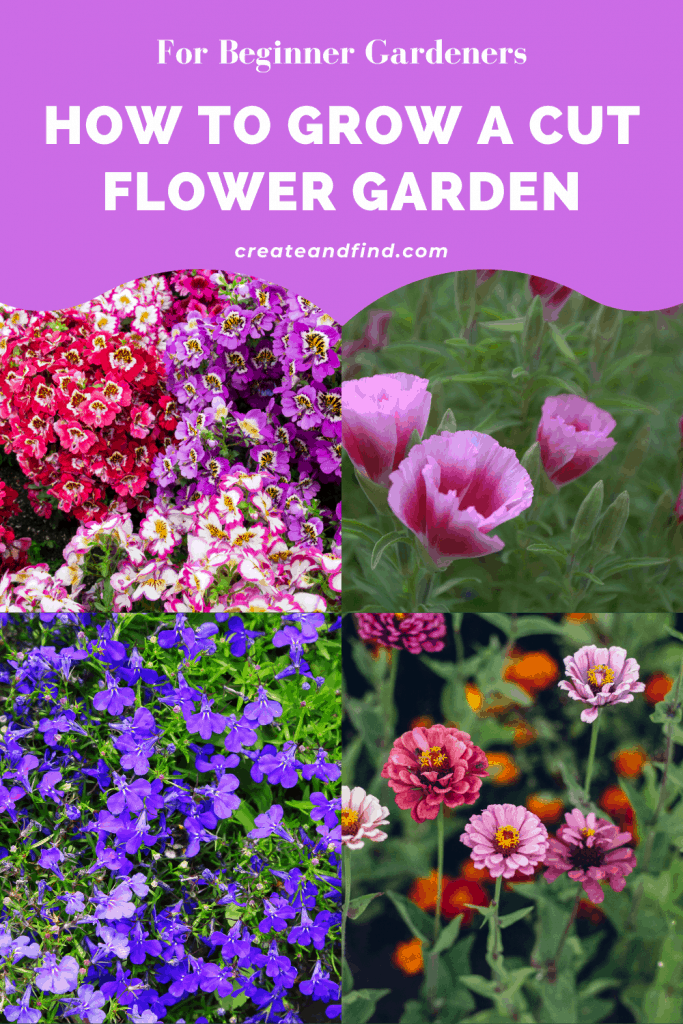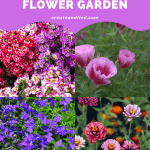Growing your own flowers for cutting is a fun gardening project that you’ll love. There are so many beautiful options to have show-stopping bouquets grown right in your own yard. Whether you have a small patio or a large yard, I’ll show you how to start a cut flower garden for beginners.
You don’t need to be an expert gardener to grow your own cut flower garden. Adding in a few easy-to-grow varieties as well as options that flower all season long can have you cutting your own flowers in no time. Try out Shasta Daisies, Zinnias, Marigolds, Lobelias, and Clarkias to name a few.
Growing your own cutting flowers is a great way to add fresh flowers to your own home or even lovely little surprises for your friends and family. It saves you money on buying flowers, plus you get to experiment with many different kinds, colors, textures, and sizes.
And don’t be intimidated if you’re a beginner. One of the best things about being a beginner is you have nothing to compare yourself to! And you don’t need tons of space. A few planters on your patio or a small flower bed in the yard will do.
You don’t need tons of money to get started either. Several of these plants are widely available for just a few bucks at any local garden center. A few plants, some potting soil, and sun are all you need!
Here are some top choices for starting your own flower cutting garden this year!
How to Start a Cut Flower Garden For Beginners
For starters, choose an area of your yard or get a few containers to get started. Buy some good potting soil (this is my favorite to use). I often don’t use a whole lot of strategy when it comes to planting flowers. I do a lot of trial and error and that’s the way I like it.
You won’t know what kinds you really like unless you experiment.
Perennial – Returns for at least two years after planting
Annual – Needs to be planted each year. However, there is a possibility of re-seeding and returning.
Shasta Daisies
Shasta Daisies are great options for flower cutting gardens. They are easy to grow which makes them ideal for beginners.
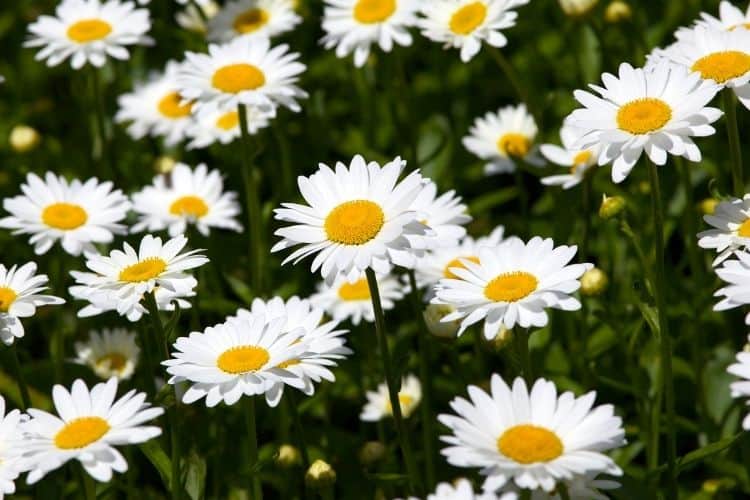
- Zones 4-8
- Prefers full sun or light shade
- Perennial
- Grows up to 4 feet high and 3 feet wide
- Blooms with white and yellow flowers all the way into fall
- Long-lasting blooms make them great for cut flowers
Zinnias
Zinnias make practically every list I make with flowers. They are just that good. So easy to grow and the wide variety of colors makes them excellent for cutting gardens.

- Zones 3-10
- Annuals (however, they can reseed and produce new plants the next year)
- Prefer full sun
- These come in an array of colors from yellow, pink, red, purple, and orange.
- Continuous blooms all summer long into the fall depending on your zone.
- Wait until after the last frost to plant (for more info see this guide on planting zones for Zinnias)
Marigolds
We tend to think of Marigolds as fall flowers with their traditional orange and yellow hues. However, these will produce an abundance of flowers you can cut from spring until frost appears.
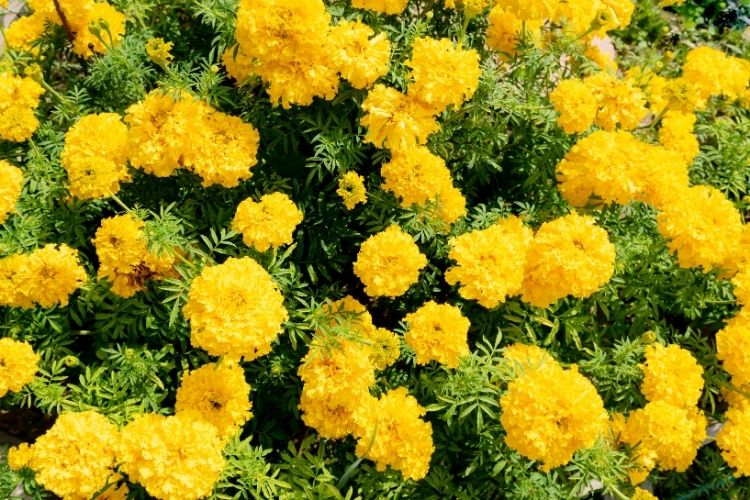
- Suitable for nearly every planting zone
- Prolific bloomers
- Primarily orange and yellow blooms
- Prefers full sun
- Annuals
- Grow to around 2 feet high and 1 foot wide
- Widely available in large quantities from any garden center
Violas
These gorgeous flowers are similar in appearance to Pansies. With a variety of colors from purple, orange, white, yellow, red, and even blue and black, they make great additions to your cut flower garden.
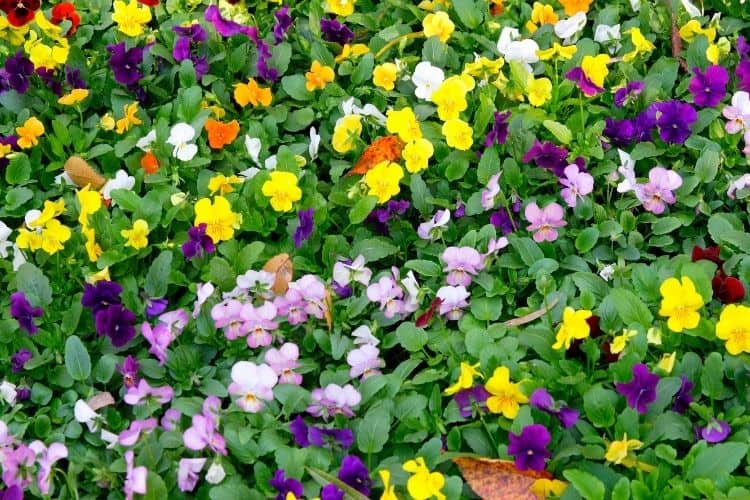
- Suitable for all zones
- Easy to grow
- Edible flowers
- Full sun to partial shade
- Mostly grown as an annual but can be a perennial in some climates
Lobelias (Cardinal Flowers)
Lobelias are striking stems that can grow up to 5 feet tall. These will make excellent cut flowers for tall vases where you want some height.

- Zones 2-9
- Perennials
- Prefers partial shade
- Available in striking red and blue/purple color varieties on top of spire-like stems
- Be aware that the Lobelia plant is poisonous so consider this when around children or pets
- Historically used for medicinal properties, but can be dangerous
- Prefers the cooler temps and blooms can suffer in extreme heat
Clarkias
These dainty-looking plants are easy to grow and will grow in most zones which is why they are excellent for beginner flower gardeners.
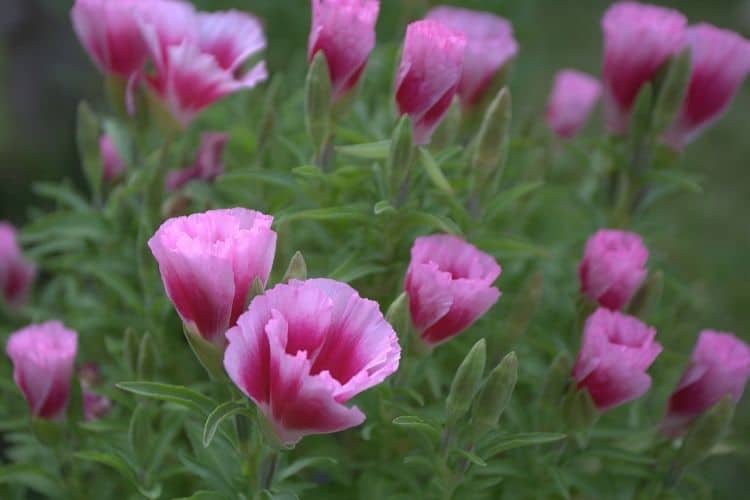
- Grows in all planting zones
- Annuals
- Likes full sun, however, if it’s an especially hot climate, they may like partial shade
- Self-seeding so they will spread and they actually like to be overcrowded
- These are best grown from seed to encourage more blooms
- Available in purple, pink, and white shades
Sweet Williams (Dianthus)
Sweet Williams are an interesting flower variety that will look stunning in any cut flower arrangement. Slightly wild flower-ish and sophisticated all at the same time, you can’t go wrong adding these to your cut flower garden.

- Zones 3-9
- Prefers full sun
- Thrives in cooler climates
- Deer Resistant
- Can be grown from seed or plants (if you buy plants, choose ones that aren’t blooming yet)
- Depending on the variety, your plant could be annual or short lived perennial
- Available in a wide range of solid to mixed colors – white, pink, purple, and red
Schizanthus
These are stunning plants that produce clusters of brightly colored blooms on delicate green foliage. In addition, the blooms have multicolored hues on them making them striking cutting flowers.
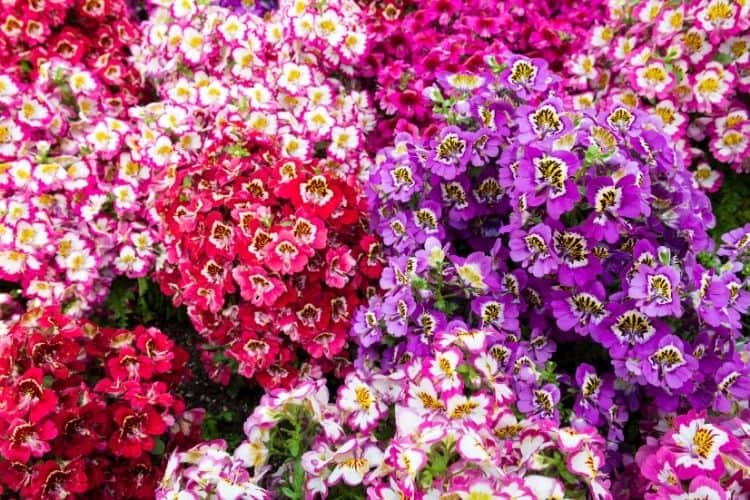
- Will grow in all zones, but don’t thrive in exceptionally hot climates
- Annuals
- Can tolerate full sun or partial shade
- Available in a variety of colors from pink, white, purple, and red
- Compact plants growing to around 12 inches wide and 18 inches high
- These make excellent border plants as well as container plants
Inulas
These are interesting blooms that resemble sea creatures. They have spiny large yellow blooms on dark green foliage. You need a larger space for these if possible because some species can grow up to 7 feet tall and 4 feet wide.
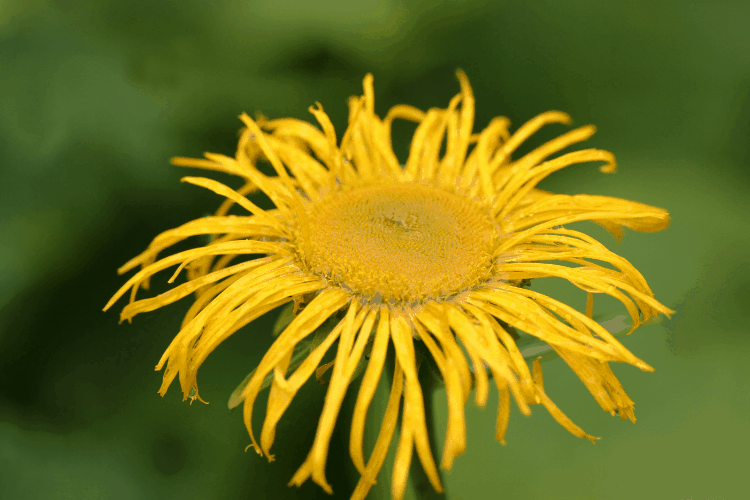
- Zones 3-9
- Perennials
- Prefers full sun but need afternoon shade in particularly hot climates
- Bright yellow blooms in summer that can be up to 6 inches wide
- Can be planted from seed in early fall or from plants in spring
- These make a beautiful backdrop for smaller plants and are perfect for cutting flowers
Now that you have several great options for growing your own cut flower garden, you can make a growing plan.
Plan Your Cut Flower Garden for Beginners
You’ll want to add a variety of colors and sizes for your cutting garden. Again, you don’t need a huge space. If you have a small patio – no worries. Pick two or three planters and add a different plant in each pot.
Or depending on the size of your planters, you may be able to add two or three plants in each one.
If you’re working with an area in your yard, is it free from deer or other animals? If not, you may want to consider a way to keep them out. Deer love to snack on flowers as much as we love to look at them.
If keeping them out isn’t feasible, choose a few deer-resistant plants like Sweet Williams (dianthus) and Marigolds.
Watering your Flower Garden
The biggest thing to notice when using planters, particularly in full sun is the water needs. Make sure your plants are getting enough to drink so they will grow properly.
And if you’re plants are brand new, you’ll want to supply adequate water to establish them and ensure they develop a good strong root system and thrive.
If you’re a beginner, it’s unlikely that you have a drip irrigation system. And it’s ok. I keep a gallon pitcher beside my sink and I pour any leftover water into it to use for watering my plants.
I’m in the South so watering is a daily chore for me particularly in the summer heat.
Growing a Cut Flower Garden For Beginners
It’s simple. Pick a few plants you love. Experiment. There will be some failures and that’s ok. That’s the joy of gardening – there’s always something to learn.
But I bet you’ll also end up with some gorgeous blooms to use for your home.
Be sure to check out more flower and plant ideas below!
